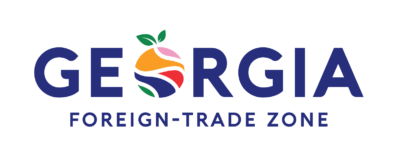FTZ Distribution Centers Encourage US Investment
By Brandi Hanback, Managing Director Rockefeller Group, Foreign Trade Zone Services
Foreign-trade zones support economic development and jobs in local communities beyond manufacturing and exports. Because of shifts in global manufacturing, communities have adapted their economic development strategies to attract distribution jobs and investment, recognizing the value these companies bring. Retailers with global sourcing patterns and stores throughout North America have utilized the FTZ concept to support North American distribution from a U.S. base of operations.
Located in a 1.7 million-square-foot distribution subzone at Tejon Ranch, Calif., IKEA Wholesale Inc. stages imports and exports of home furnishings and accessories to more than 20 stores in the U.S. and Canada. FTZ benefits support efficient flow of merchandise to and from the distribution center, while providing duty deferral benefits and duty elimination on exports. Instead of paying U.S. duty when a shipment arrives at a U.S. port, duty payment is deferred until the goods are actually transferred from the zone into the U.S. market, providing valuable cashflow benefits. Goods from overseas are deconsolidated and inspected, and in some cases, repairs, repackaging, labeling and marking may be performed to prepare the goods for final sale. For those distribution products shipped to Canada, U.S. duty is eliminated entirely upon export of the goods from the U.S. FTZ. Returns to vendors may also supplement duty elimination benefits in distribution FTZs.
Crate and Barrel is another similarly situated retailer that benefits from use of the U.S. FTZ program. Located in a 650,000-square-foot FTZ distribution center comprised of two separate buildings at Exit 8A in Cranbury, N.J., Crate and Barrel took advantage of the opportunity of locating in an existing general-purpose zone. As a distributor, companies may locate in existing general-purpose zones, and eliminate significant time and cost delays of establishing new subzones at the federal level. In addition to the duty savings realized by retail distribution companies in FTZs, Crate and Barrel was attracted to the supply-chain efficiencies presented by direct delivery and weekly entry benefits.
Direct delivery provides for imported shipments to move directly from the port of unloading to the distribution center in bond, eliminating certain types of delays that can be associated with Customs entry at the port. For companies moving product from the West Coast to the East Coast, direct delivery can save days out of the supply chain. On the outbound side of the distribution center, FTZ users may qualify for weekly entry procedures, allowing for one weekly entry summary for all goods shipped from the FTZ over a seven-day period. For high-volume, 24-7 operations, weekly entry equates to flexible and just-intime delivery schedules to customers as well as fewer Customs entries and associated savings. By filing their Customs entries after goods have been physically received, verified and shipped, high-volume importers find that FTZs support their Customs compliance efforts by allowing for more accurate Customs reporting and reduced post-entry adjustments and amendments.
Companies such as IKEA and Crate and Barrel can also position themselves for the future to utilize FTZ benefits throughout the supply chain for inventory moves between distribution centers using zone-to-zone transfers. Retail suppliers might also be attracted to zone-to-zone transfers as a means to move product from import distribution center to retail customer distribution center, and for mixing with other goods for final preparation for retail sale prior to store shipment.
Whether your business is distribution, manufacturing or a mixture of both, FTZs may be worth visiting or revisiting. Recent changes in the program to support automated filing of admission reporting has made the program easier to use than ever, and with more than 250 FTZ projects throughout the country, your business may be able to avoid the time and cost associated with obtaining a federal designation. For those companies desiring to manufacture in an existing FTZ, new streamlined procedures at the U.S. Foreign-Trade Zones Board aimed at promoting small and medium-sized businesses, use of FTZs can make duty reduction benefits faster to access and cost efficient, too. Some assembly and repackaging operations may also qualify for the ability to import components at a higher duty rate, change the product in the zone and remove the product for consumption in the U.S., paying duty-based on the lower finished good rate as applicable. FTZs also complement and support secure supply chains, and participants in the CustomsTrade Partnership Against Terrorism program should be aware that Customs recently recognized use of U.S. FTZs as a C-TPAT best practice.

